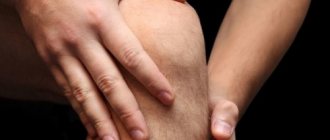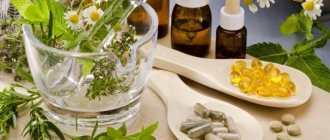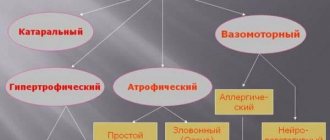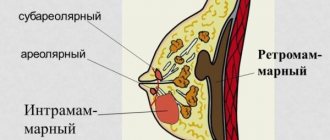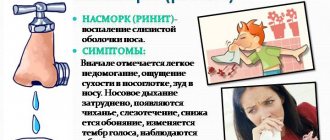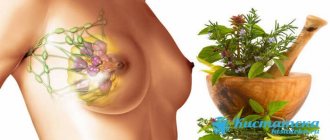Nasal polyps are a rather unpleasant condition that is accompanied by problems with nasal breathing. Patients are concerned about increased fatigue, constant nasal congestion and nasal sound. Without proper therapy, the growth of such formations can lead to unpleasant consequences. How to treat nasal polyps? Is it possible to carry out treatment without surgery? To answer these questions, you should consult your doctor immediately.
What are polyps? Short description
Nasal polyps are benign, round-shaped formations that are painless to the touch. They are the result of excessive growth of the nasal mucosa and sometimes resemble peas or mushrooms in appearance. How does this happen?
During an infectious-inflammatory process, leukocytes accumulate on the mucous membrane, which fight the pathogens. When the required number of white blood cells is not enough, the body tries to fill the gap by increasing the area of the mucous membranes. As a result, polyps appear.
Such formations make nasal breathing difficult, which causes a lot of problems for the patient, so at the first suspicion of their appearance, it is necessary to seek advice from an otolaryngologist. Currently, there are many methods of therapy to remove unpleasant growths.
How to get rid of nasal polyps at home
Treatment of polyps in the nasal passages with folk remedies should begin with consulting a doctor. Many of the recipes actually reduce the volume of the tumor, restoring normal breathing.
Symptoms and treatment of nasal polyps: features of traditional medicine
Polyps of the nasal passages are benign neoplasms formed from overgrown mucous epithelium under the influence of multiple factors.
As the polyp grows, nasal breathing becomes impaired. The patient is forced to breathe more and more through the mouth, which leads to an increase in symptoms and a deterioration in the quality of life.
Treatment tactics are determined only after diagnosis and consultation with an otolaryngologist.
Clinicians prefer a radical method of treatment - surgery. However, if the polyp is small, does not have a tendency to grow rapidly and become malignant, or there are serious contraindications to surgical intervention, you can resort to alternative therapy methods.
Clinical manifestations of the neoplasm
Polyps, regardless of their number, gradually begin to manifest themselves with a characteristic clinical picture. The patient's first complaints are usually related to nasal congestion. Vasoconstrictor drugs usually do not bring relief; the patient increasingly has to compensate for the lack of nasal breathing through the mouth.
Typical symptoms include:
- Feeling of constant nasal congestion;
- Chronic runny nose (sneezing, increased mucous secretions);
- The appearance of a nasal voice;
- Impaired sense of smell (absolute or partial).
The polyp is perceived by the body as a foreign body, so sneezing and increased mucus excretion become chronic.
Secondary signs of nasal polyposis are:
- headache,
- deterioration in performance,
- memory (lack of oxygen supply to the brain).
Read more about the signs of nasal polyps in adults here.
Symptoms of nasal polyposis
The appearance of polyps very often cannot be detected without examination by a doctor. The signs of this disease can be easily confused with ordinary rhinitis. The growth of the mucous membrane is accompanied by a feeling of congestion and a decrease in the function of smell. The sick person has to breathe through the mouth because the airways are blocked.
Due to the impossibility of normal nasal breathing, the mucous membrane of the larynx dries out. A dry, hacking cough may appear. When polyps grow towards the auditory canals, hearing impairment and speech distortion in adults may occur. Young children may develop an abnormal bite.
Methods for treating polyps without surgery
How to get rid of nasal polyps? To do this, you should visit an otolaryngologist. After examination and testing, the doctor identifies the true cause of the polyps. In accordance with the results obtained, the doctor selects the most suitable treatment method. Commonly used methods of therapy include:
- medication course;
- ethnoscience;
- homeopathy;
- phytotherapy.
Treatment of nasal polyposis with modern drugs and homeopathic remedies involves the use of all kinds of sprays and drops. These medications help reduce inflammation, relieve swelling, and also inhibit the proliferation of mucosal cells. The disadvantage of drug therapy is its duration. How else to treat a nasal polyp without surgery?
Non-traditional methods of treating polyposis help alleviate the patient’s condition and reduce the symptoms of the disease. Unfortunately, using only folk recipes, it is impossible to get rid of polyps. It is best if treatment at home is an addition to the main course.
Causes of appearance and main symptoms
For clarity, we will place information about the causes and symptoms of the disease in a table.
| Causes of polyps in the nasal cavity | Symptoms of the disease | Risk group |
|
| Children under the age of 10 years (it is in them that this disease most often occurs). |
Nasal polyps can cause a lot of inconvenience to a person, but the main danger is that benign formations can transform into malignant ones.
They are characterized by gradual growth, so if you do not seek help immediately, polyps can close the entire nasal passage. This is the main reason why nasal polyps need timely treatment.
Surgical intervention is a last resort measure to get rid of the disease, but we will tell you about alternative ways to solve the problem.
When is treatment without surgery effective?
Surgical removal of growths is an effective procedure, but you can get rid of nasal polyps without surgery. Drug treatment is used in most cases at the initial stage of the disease. While the formations are small, they are easier to treat. It is also necessary to do without surgical intervention if it is impossible for medical reasons. The operation is not performed on elderly people or pregnant women. In these cases, only conservative treatment is indicated.
Polypotomy (cutting off polyps) is also contraindicated in various pathologies of the cardiovascular system and blood clotting disorders. Patients with asthma may develop a dangerous, life-threatening condition during surgery.
Drug treatment of polyps
How to cure nasal polyps without surgery? The main goal of polyposis therapy is to remove emerging tumors, as well as eliminate the cause that provoked their growth. In each specific case, the doctor selects the most suitable drugs.
Hormone therapy
This treatment method is called medical polypotomy. It consists of administering a hormonal drug directly into the body of the polyp (Prednisolone, Dexamethasone). Such medicines can only be administered once every 7 days. For final atrophy of the polyp, 1-2 injections are usually enough. As a result of the treatment, the polyp is removed from the nasal cavity on its own over time. After medical polypotomy, it is recommended to undergo a maintenance course of herbal preparations or homeopathic remedies.
Hormonally active sprays
Treatment without surgery can be carried out with sprays containing hormones. They are often used in outpatient treatment of polyps. The positive side of these drugs is that they are not absorbed into the systemic circulation, thereby minimizing the occurrence of side effects. Among the most effective are:
- "Nasonex";
- "Beclomethasone";
- "Polydex";
- "Flixonase".
Such drugs are prescribed to prevent the growth of the mucous membrane and the appearance of new formations. However, it should be remembered that long-term use of these drugs can lead to unpleasant consequences for the body.
Vasoconstrictor drops
Polyposis is quite often accompanied by swelling of the nasal mucosa. This condition, along with neoplasms, leads to difficulty in nasal breathing, and as a result to oxygen starvation. To relieve such symptoms, vasoconstrictor drops are used:
- "Vibrocil";
- "Xylene";
- "Otrivin."
Other medicines
Therapy for polyposis must be comprehensive. If the tumors occur due to a bacterial infection, antibiotics will be required. In cases where mucosal growth occurs against the background of an allergic reaction, antihistamines are prescribed.
Treatment of nasal polyps may require the use of immunomodulatory therapy. The immunocorrective agents used in this case promote the active production of antibodies. As a result, the body’s defenses grow, and it can easily cope with developing pathologies.
You can use regular honey as a homemade ointment for polyps. They lubricate the nasal passages. A mixture with propolis tincture gives a more powerful effect. This balm quickly helps to cope with unpleasant formations.
Drug therapy
Drug treatment, despite the non-invasive method and local application, has a powerful effect on the human body.
When choosing drug treatment, it is important to understand the following aspects::
- Compliance with discipline and precise treatment regimen;
- Maintaining a healthy lifestyle;
- Readiness for long-term therapy.
The results of drug treatment do not appear immediately. In addition, there are likely risks of side effects and complications from certain organs and systems.
Treatment is selected strictly individually, based on multiple diagnostic criteria:
- Patient's age;
- Localization of the polyp and its structure;
- Tendency to proliferation and oncogenic transformation.
The results of drug treatment do not appear immediately. In addition, there are likely risks of side effects and complications from certain organs and systems.
Medicines
Medicines for the treatment of nasal polyposis can be divided into local and systemic. Often these agents are combined to achieve maximum therapeutic results.
Medications for nasal polyposis are also classified into pharmacological groups.
Systemic hormonal drugs
Oral corticosteroids, or corticosteroids, are the mainstay medications in the treatment of nasal polyposis. The dosage is selected based on the patient's age and weight.
Treatment with hormones is especially effective for polyps caused by bronchial asthma, allergens, and chronic rhinitis.
The main drugs are:
- Prednisolone . A hormonal agent with high therapeutic activity due to anti-inflammatory, immunosuppressive, antiallergic and antiproliferative effects. Inhibits further growth of epithelial tissue, thereby stopping the growth of the polyp. The main dosage of drugs per day is 30-50 mg, the duration of therapy is 5-7 days. Next, a gradual drug withdrawal scheme is used, reducing the dosage. This allows you to reduce the risks of side effects and maintain normal weight.
- Dexamethasone . Hormones in tablets have a pronounced anti-inflammatory and anti-allergic effect by reducing the sensitivity of tissues to allergens. At the same time, it suppresses the immune system and increases sensitivity to proteins of the outer cell membrane. Dexamethasone restores protein metabolism, affects the condition of the mucosa, inhibiting the further development of polyposis.
Read also…. Sinusitis: symptoms, treatment
Other effective oral hormones include::
- Polcortolon,
- Medrol,
- Urbazon,
- Triamcinolone,
- Celeston,
- Kenalog,
- Cortineff.
Important! All medications should be taken only as prescribed by a doctor, as they have many serious health consequences if used inappropriately.
Hormones for topical use
Local hormonal agents are intended to slow the growth of small polyps. The advantage of local use is the low likelihood of absorption into the systemic circulation, as well as a direct effect on the pathological neoplasm.
The main drugs are:
- Flixonase, Nazarel - with the active component fluticasone;
- Nasonex is the main active ingredient mometasone;
- Tafen nasal, Beconase, Nasobek are the active components of budesonide.
The drugs immediately affect the structure of the polyp, reducing its volume. After only 3-4 days, patients experience relief in nasal breathing.
Antihistamines
Antihistamines are used in cases of confirmed allergic rhinitis, as well as nasal polyposis of unknown origin. In otolaryngology, drugs without sedative and cardiotoxic effects are often used.
The main antihistamines are:
- Cetirizine;
- Loratadine;
- Cetrin;
- Erius;
- Levocytirizine.
The duration of treatment with antihistamines is 7-14 days, depending on the severity of the pathology, the severity of the clinical picture and the nature of the occurrence of polyps.
Traditional methods of treating nasal polyps
You can prepare remedies for the treatment of polyps at home. They are used as an auxiliary method of therapy.
Washing
One of the most common procedures is rinsing the nose with saline solution. To do this, dissolve a teaspoon of ordinary coarse salt in 0.5 liters of warm water and filter the resulting solution. You can add 2 drops of iodine to the resulting product. Rinsing can be carried out using special devices or simply with a regular syringe.
Treatment of nasal polyps with folk remedies is not difficult. “Grandmother’s” methods are rich in recipes based on various medicinal plants. The most effective treatments for nasal polyps are:
- celandine;
- Walnut;
- White Lily;
- horsetail.
Celandine
This plant is a real home doctor. It has antimicrobial, anti-inflammatory and antifungal properties. But you should remember that this medicinal herb is poisonous and you need to prepare home remedies from it very carefully. Treatment of nasal polyps with celandine should only be carried out with the permission of a doctor.
The juice of this plant can be used to treat the disease. It is not difficult to prepare a home remedy: to do this, squeeze the juice from the branches of fresh celandine, dilute it with cool boiled water and mix thoroughly. It makes effective drops for nasal polyps, which, if used correctly, will help eliminate tumors. The finished product is instilled in the morning and evening, 2-3 drops into the nose for polyps. The standard course of treatment with celandine for nasal polyps is no more than 7 days, then take a break for two weeks. Complete removal will require 5-7 weekly sessions.
Walnut
To treat nasal polyps with folk remedies, a tincture of green nuts and turpentine is often used. They call her Todikamp. To prepare it you will need 10 unripe fruits and 3 cups of purified kerosene. The nuts are passed through a meat grinder and filled with kerosene. The mixture is poured into a glass jar and left in a dark place for two weeks. Next, the container is moved to where there is more light and left for another month. When the product is ready, it is filtered through cheesecloth.
If everything is done correctly, the resulting infusion will be light in color with a slight sediment. The finished drug is instilled into the nose twice a day. Using this recipe, curing nasal polyps at home will not be difficult.
White lily, horsetail
Tincture of white lily helps quite well with polyposis. To prepare this folk remedy, the plant is finely chopped, poured with vodka, then infused for 12 days. To treat polyps, the tincture is diluted 1:1 with ordinary boiled water. Turundas (gauze or cotton swabs) are moistened in the solution and inserted into the nasal passages. The procedure can be performed up to 3 times a day for a month.
Horsetail decoction is no less effective. 2 tablespoons of the dried plant are poured into 250 ml of boiling water. Infuse the product for about 30 minutes and use it to rinse the nasal cavity. To do this, the decoction is sucked into each nostril in turn. The procedure is performed up to 10 times a day. It should be remembered that you need to prepare the medicine according to this folk recipe every day.
Treatment with folk remedies
How to prepare nasal drops:
- Using a series. Art. l. chopped string is steamed with a glass of boiling water. Boil for 10 minutes. over low heat. Strain. Drip 3 drops into each nostril in the morning and evening at the same time for 20 days.
- Anise drops. Grind 15-20 g of pharmaceutical anise in a coffee grinder. Pour 100 ml of 70% medical alcohol into a bottle. Leave in the refrigerator for 8 days. Add boiled water and cooled to room temperature in the amount of 1 part anise tincture to 3 parts water. Shake well before putting into nose. Drip 3 times a day, 10 drops in 1 nostril for 15 days. If complete recovery has not occurred, take a break of 2 days. And take 1 more course.
- Horsetail drops. To prepare the drops you need 2 tbsp. l. steam dry chopped horsetail in 250 ml of hot water. Leave covered for 0.5 hours, strain. Take a special bulb to rinse your nose. Bend over the washbasin and, one by one, into each nostril without pressure, slowly introduce the infusion. 10 times on each side. The procedure is carried out every day until complete recovery. If after this procedure there is any infusion left, it must be poured out. Only fresh can be used.
- St. John's wort with celandine. Heat part of the crushed St. John's wort and 4 of the same parts of oil in a steam bath for 10 minutes. Then for each tsp. add 1 cup of juice squeezed from twisted celandine to the mixture. Drop 1 drop into the nose 4 times a day. Treat for 10 days.
- How to prepare celandine juice for instillation into the nose. The juice is prepared from freshly picked plants. It must be collected when the flowers have already appeared, but have not yet begun to bloom. At this time, the plant juice is most useful. It is necessary to wash the flowers and the root of the plant well. Grind through a meat grinder, squeeze out the juice using gauze into a non-metallic and non-plastic container. Leave for 5 days. in a cool place, out of direct sunlight. After this, drop 1 drop into each nostril 3 times a day. Drops can be prepared from the juice of the celandine stem. Drop 1-2 drops of infused solution for 5 days. juice, morning and evening, 10-15 days. In 10 days can be repeated. So up to 5 courses.
- Infusion of celandine. Ch.l. Finely chopped celandine herb pour 1 cup of boiling water. Cover and leave for 0.5 hours. Strain through a sieve or cheesecloth. Dip cotton swabs into the infusion and place in both nostrils for 15 minutes. Treatment is carried out 2 times every 1 day. Treat for 2 months. After 1 month, the course of treatment must be repeated. The infusion prepared according to the specified recipe can be poured into the nostrils from a special pear or sucked in through the nose and then spat. The procedure must be carried out 2-3 times every 1 day 15 days. to the row.
How to prepare nasal ointment:
- From propolis. To make it, you need to mix until smooth: 15 g. propolis; 10 gr. Vaseline; 25 grams of butter. Take cotton swabs of the appropriate size, dip them in the ointment and insert them into the nostrils. The ointment is stored in the refrigerator. Place for 5-10 minutes twice a day. Carry out treatment for at least a month. On weekends, you can apply it on top of your nose for the whole day.
- Honey. If you are not allergic to honey, you can smear it inside your nose. 3 times every day for 1 m. During this time, the polyps should resolve.
- Treatment with oils. Mix the following oils: Ledum - 20 parts, St. John's wort - 20 parts, Sea buckthorn - 40 parts, Propolis tincture - 15 parts, Honey - 5 parts. Apply the mixture to the nostrils 5 times every day for 15 days.
Treatment of polyps with homeopathic remedies
Homeopathy is considered one of the effective means of alternative medicine. The motto of this technique is “like cures like.” Each homeopathic remedy is a special medicine that can cause disease in a healthy person. In other words, when it enters the body, it causes a medicinal disease, which subsequently displaces the existing disease.
The following homeopathic medicines are used to treat nasal polyps:
- "Glycerin teucrium". It is diluted with water in a ratio of 1:5 and drawn in alternately through each nostril up to 4 times a day. Lubricate the nasal cavities with undiluted product.
- "Calcarea carbonica". It is used to treat mucous polyps. Place 2 drops in the nose every morning.
- "Thuja 200". This remedy is effective for pointed polyps.
- For fleshy polyps, drops of Bichromicum 3, Silicea 6, Phosphorus 6 are prescribed alternately every day.
Diet for nasal polyps
If a diagnosis of “nasal polyps” is established, then in addition to the main treatment, additional medical recommendations must be followed. First of all, diet. With this disease, it is necessary to limit the consumption of canned and refined foods. You should also reduce the amount of sugar and salt you consume.
The daily diet should be balanced and consist only of natural products. Vegetables, raw or stewed, fresh seasonal fruits. Freshly squeezed juices and uzvar are very useful. A diet for nasal polyps must include daily consumption of cereals.
Photo: what polyps look like in adults and children
To help the doctor understand what the patient’s polyps look like and how much they have grown, Hartman mirrors are used.
During rhinoscopy, the specialist sees formations in the nose with a smooth surface of a yellow or transparent color, on a stalk. Possible discharge of pus.
What nasal polyps look like in children - the photo is presented below. When examined without tools and apparatus:
What nasal polyps look like in adults - the photo is presented below:
What does a polyp look like from the inside:
What should you not do if you have polyposis? How not to harm yourself?
Nasal polyps are a rather unpleasant disease that causes great discomfort. That is why many try to cope with this problem on their own, because they do not have time to visit a doctor. This is a fundamentally wrong tactic. Even the most common traditional methods of treatment can cause enormous harm to the body.
So, what should you not do if you have nasal polyposis?
- carry out any procedures and take medications without consulting a doctor;
- remove polyps yourself;
- use medicinal herbs for allergic forms of the disease;
- apply heat compresses;
- treat nasal polyps with hydrogen peroxide and other aggressive agents.
The procedure for treating polyps is a rather complex and lengthy undertaking. To prevent their occurrence, respiratory diseases and other pathologies of the nasopharynx that contribute to the development of such pathologies should be promptly treated.

